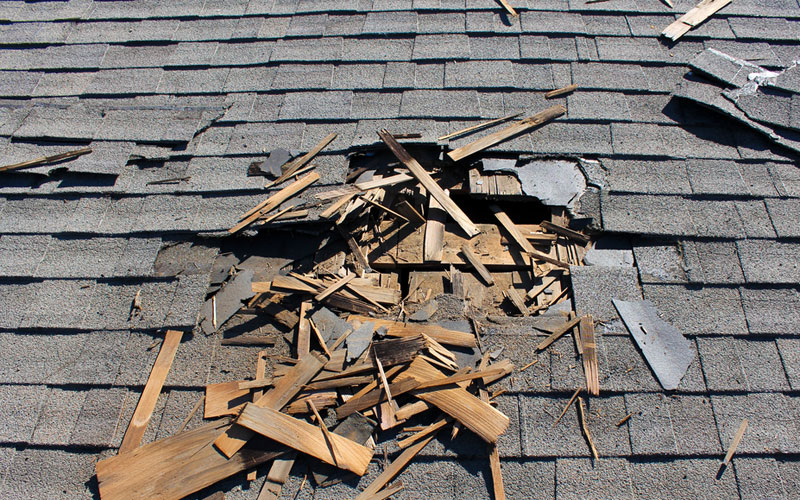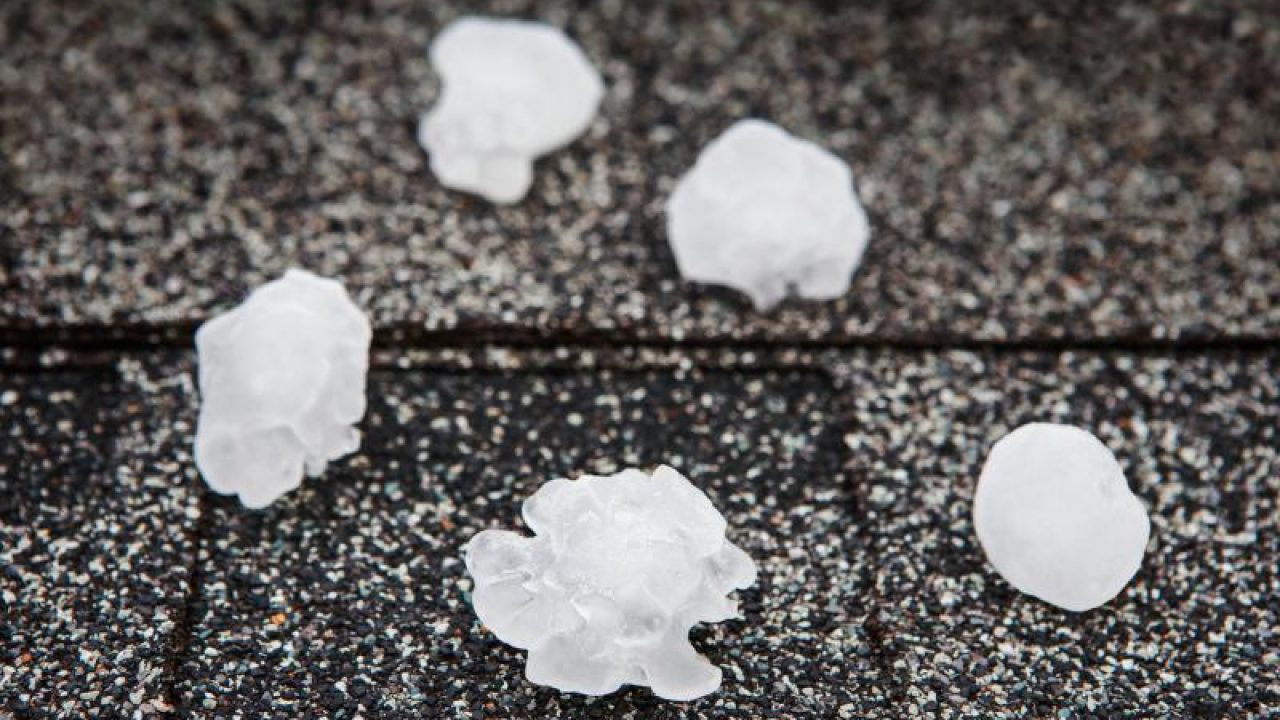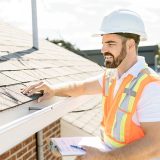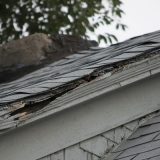
The Tri-State area is prone to bad weather, from hailstorms and hurricanes to summer storms with heavy wind and rain. This can take a toll on your home, causing damage to roofs and deteriorating other parts of your home.
Different Types of Storm Damage
Wind Damage
In most cases, wind damage to the roof will result in the shingle tearing or being pulled away from the roof. Hurricane-force winds (74 mph or more) can damage your home’s roof, and gale-force winds (between 39-54 mph) can also cause visible damage, including removing or tearing shingles and exposing the underlayment, roof deck, or waterproofing material to the elements.
When installed, shingles are positioned in an overlapped formation to create a water-tight seal. This seal can be broken if the shingles lift and curl, leaving the roof vulnerable to damage from wind-driven rain.

Hail Damage
Hailstorms are brief, but hailstones can damage shingles and loosen granules. This is a problem because granules help protect your roof against rain and sun damage. Hail damage can also damage the surface of your roof.
Water Damage
If your roof does not have proper drainage, it may suffer from standing water after heavy rainstorms, especially if the roof is uneven. Clogged gutters can also cause rainwater to back up under your shingles, allowing moisture to penetrate the underlayment or roof deck and cause leaks in your ceilings.
Roof Debris
The storm’s severity will determine how much debris ends on your roof. Anything from small branches to large tree limbs can cause damage to the roof, such as dents or impact to the shingle’s surface. This can then leave the roof vulnerable to moisture intrusion. Lighter debris may not be as much of a problem.
Steps You Can Take After The Storm
Step 1 – Safety First: It is always important to prioritize safety. Climbing on a ladder to inspect your roof can be dangerous, so hiring a professional roofing contractor is advisable. They will be able to spot any potential issues that you may not be able to see from the ground.
Step 2 – Assess Your Roof: After a storm, inspect your roof for damage by walking around your property. You may be able to see parts of your roof from one of your windows. Take pictures and videos, or keep notes of any damage you see, as this may be helpful for insurance later. Any signs of storm damage, such as dented, torn, curled, or missing shingles, should be documented.
Step 3 – Check Attic and Ceilings: Observe your home’s roof and ceilings for leaks and water spots. Wind and hail can cause unseen leaks, leading to more significant problems later. Use a flashlight to see in dark areas.
Step 4 – Home Exteriors: Look for fallen tree limbs, missing fence posts, or damaged lawn furniture and other decorations around your home’s exterior. Check flat surfaces, like patios and decks, for hail damage.
Step 5 – Gutters and Windows: Inspect your home’s gutters and roofing accessories for dents and check your windows for cracks, broken glass, loose weather-stripping, and torn screens.
Infinity Roofing is a name you can count on. We offer best-in-class roofing services throughout Northern New Jersey and New York State. Call us today at (973) 803-9485, or fill out our contact form to get started.




